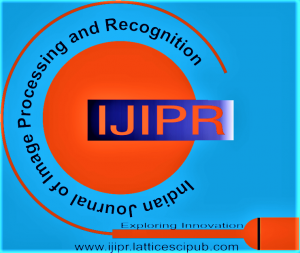![]()
Boundary Based Analysis of Image Fusion using Discrete Wavelet Transform
MonihaRangaraju1, Dharani Krishnan2, Balaji E3, Umesh K4
1MonihaRangaraju, JSS Academy of Technical Education, Bangalore (Karnataka), India.
2Dharani Krishnan, JSS Academy of Technical Education, Bangalore (Karnataka), India.
3Balaji E, JSS Academy of Technical Education, Bangalore (Karnataka), India.
4Umesh K, JSS Academy of Technical Education, Bangalore (Karnataka), India.
Manuscript received on 25 November 2020 | Revised Manuscript received on 05 December 2020 | Manuscript Accepted on 15 December 2020 | Manuscript published on 30 December 2020 | PP: 28-32 | Volume-1 Issue-1, December 2020 | Retrieval Number: A1004021121/2021©LSP
Open Access | Ethics and Policies | Indexing and Abstracting
© The Authors. Published by Lattice Science Publication (LSP). This is an open access article under the CC-BY-NC-ND license (http://creativecommons.org/licenses/by-nc-nd/4.0/)
Abstract: Image fusion is the process of conflating or combing two or more images into a single image in order to implicate the necessary information from the source images. There is plenty of technological advancement present in today’s medical imaging field. The main drawback is that each and every imaging modality has its own specialty and limitation. Thus, fusion is used to overcome the shortcoming of displaying vital information in multiple images. Fusion of CT and MRI images aids in extracting useful tidings present in both the hard and soft tissues of the human body. Image fusion of the two input images can be done using various methods such as max, min, mean, Left-Right (LR), Right-Left (RL), Up-Down (UD), Down-Up (DU). The majorly used fusion techniques in this paper include LR, RL, UD and DU fusion.
Keywords: Image fusion, CT, MRI,DWT, dmey and coif, LR, RL, UD, DU Fusion.
